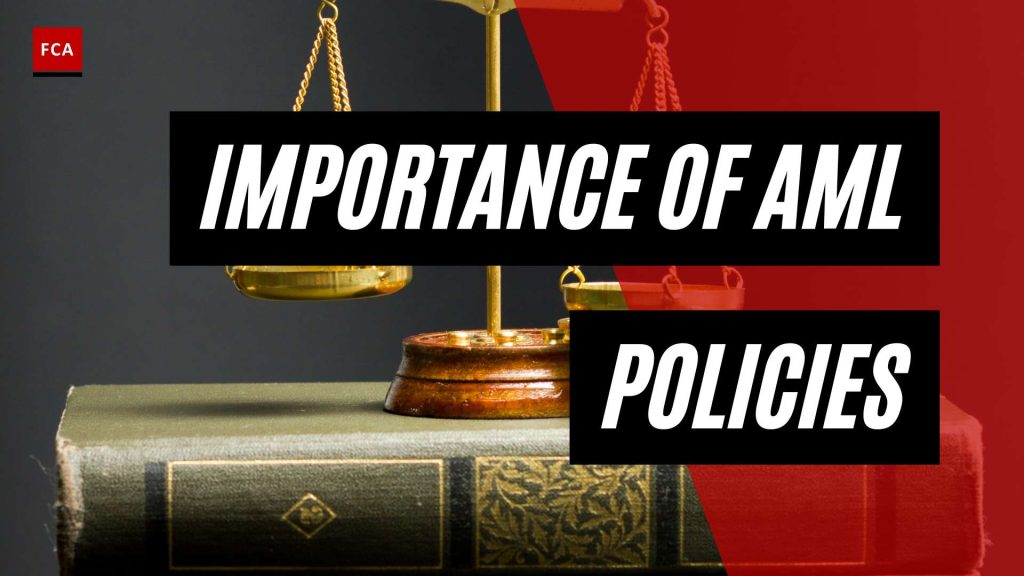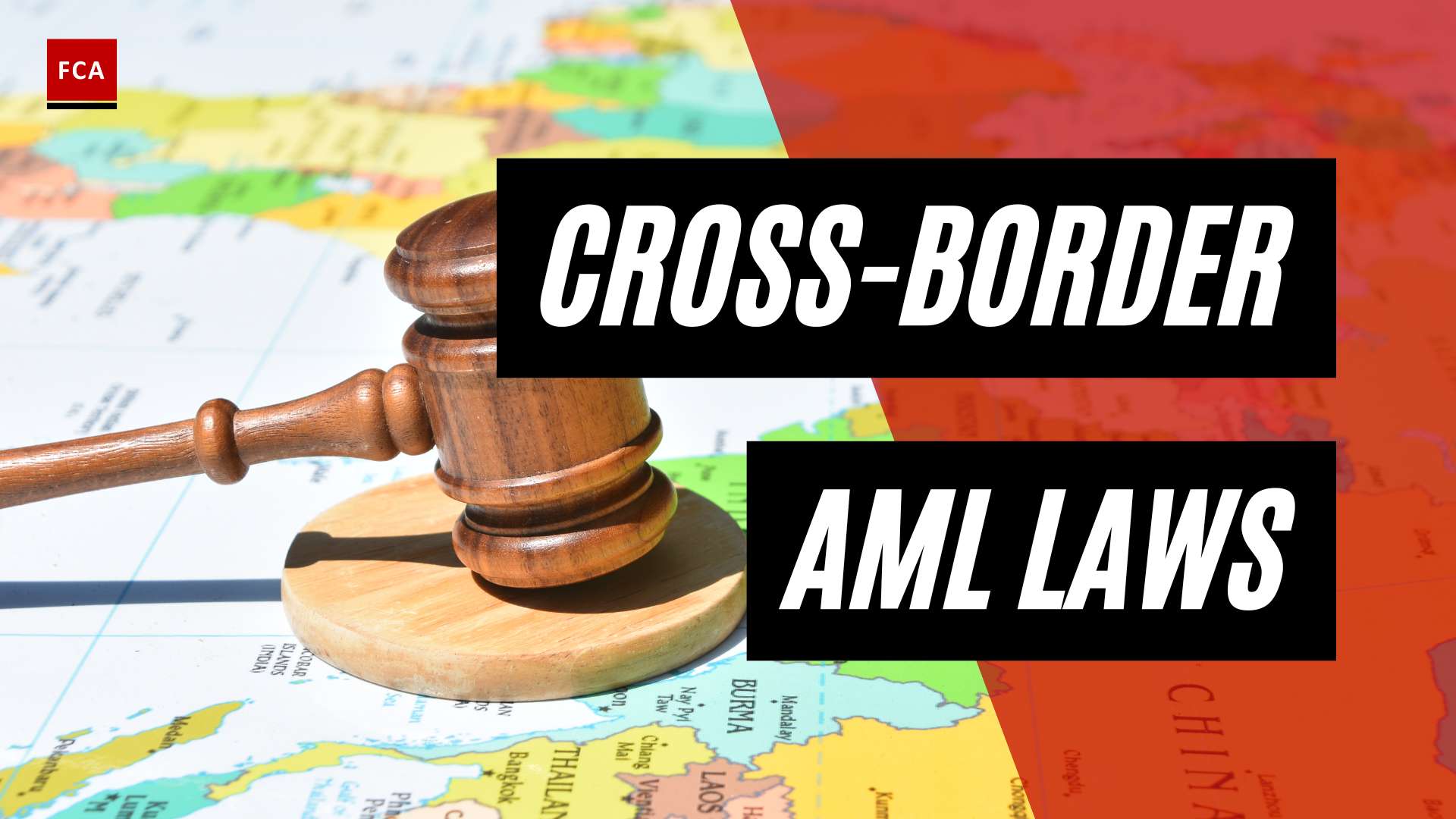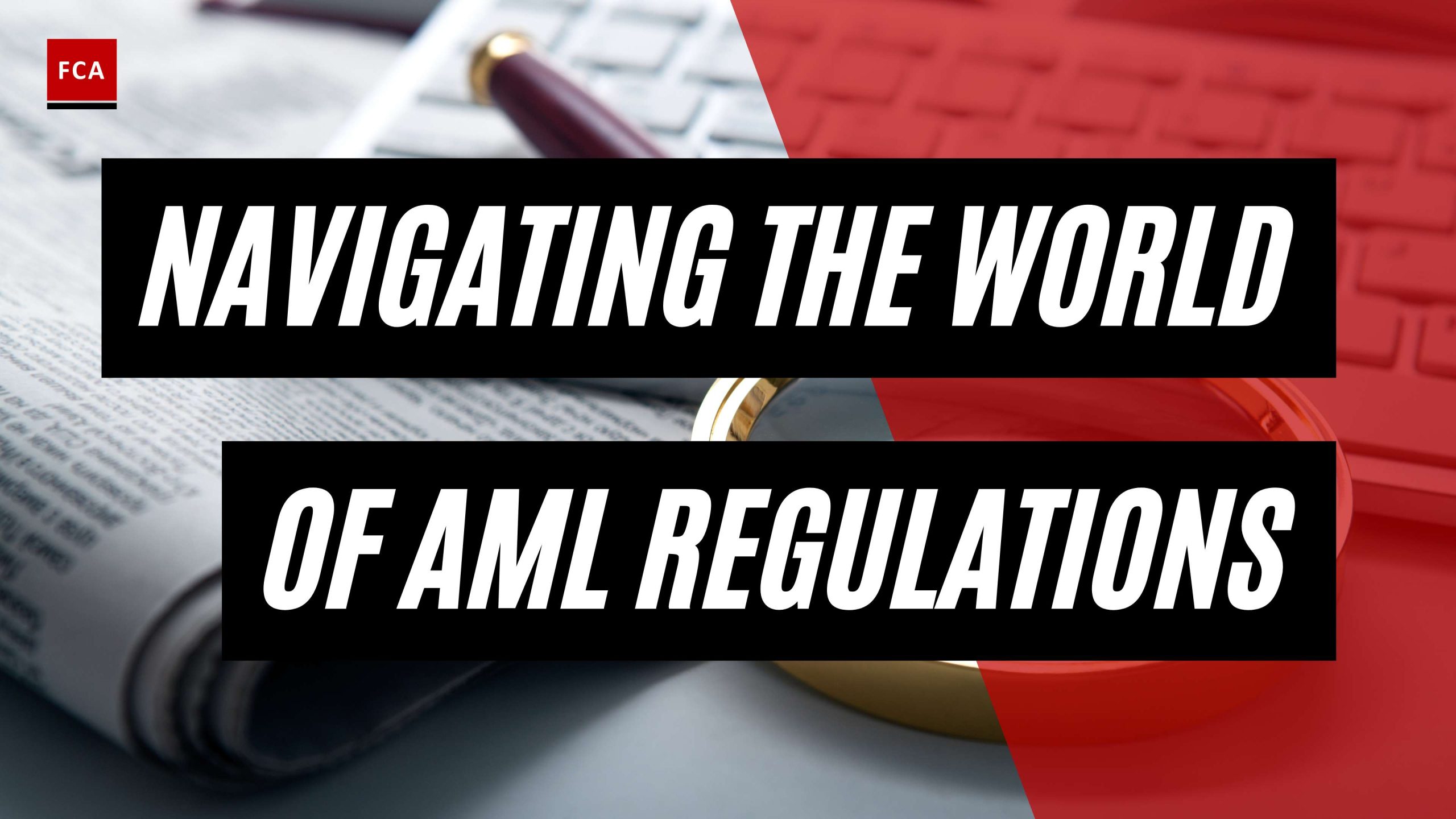Understanding AML Policy Framework
To effectively combat money laundering and terrorist financing, financial institutions must establish a robust Anti-Money Laundering (AML) policy framework. This framework encompasses the importance of AML policies and the regulatory framework for AML compliance.
Importance of AML Policies
AML policies serve as the foundation for an institution’s efforts to prevent and detect money laundering and terrorist financing activities. These policies outline the procedures and controls that guide employees in identifying and reporting suspicious transactions. By implementing comprehensive written policies and procedures, financial institutions ensure that relationship managers and other staff have access to clear guidelines.
The key elements of an AML policy include:
- Customer due diligence procedures
- Enhanced due diligence measures for high-risk clients
- Transaction monitoring protocols
- Reporting suspicious activities to relevant authorities
- Ongoing employee training programs
By having well-defined AML policies in place, financial institutions can establish a culture of compliance and reduce the risk of being exploited by criminals seeking to launder illicit funds.
Regulatory Framework for AML Compliance
AML policy requirements are guided by a regulatory framework that varies across jurisdictions. Each jurisdiction has its own set of laws and regulations designed to combat money laundering and terrorist financing. Let’s explore the regulatory frameworks in the United States, the European Union, and Canada.
AML Regulations in the United States
The United States has a comprehensive framework for monitoring and tackling money laundering, terrorist financing, financial fraud, and sanctions. Key institutions involved in enforcing AML regulations include the Financial Crimes Enforcement Network (FinCEN), the Bank Secrecy Act (BSA), the Office of the Comptroller of the Currency (OCC), and the Office of Foreign Assets Control (OFAC). These entities play crucial roles in combating financial crimes and ensuring compliance with AML requirements.
AML Regulations in the European Union
In the European Union (EU), AML compliance requirements are shaped by several directives. The Fourth Anti-Money Laundering Directive was introduced in 2017, followed by the Fifth Anti-Money Laundering Directive in 2020. These directives have had a significant impact on AML compliance requirements within the region. Financial institutions operating in the EU must adhere to these directives to ensure compliance with AML regulations (Flagright).
AML Regulations in Canada
Canada’s approach to AML compliance is overseen by the Financial Transactions and Reports Analysis Centre (FINTRAC). FINTRAC is mandated to detect, prevent, and deter money laundering and terrorism financing. The Proceeds of Crime (Money Laundering) and Terrorist Financing Act (PCMLTFA) designates individuals and entities as reporting entities, requiring them to fulfill AML reporting obligations. Compliance with these obligations is crucial to maintaining the integrity of Canada’s financial system (Namescan Insights).
By understanding the regulatory framework specific to their jurisdiction, financial institutions can tailor their AML policies and procedures to meet the requirements set forth by the relevant authorities. This ensures that institutions are well-positioned to combat money laundering and terrorist financing effectively.
As financial institutions navigate the AML policy framework, it is essential to stay informed about evolving regulations and adapt internal policies accordingly. Regular review and updates to AML policies and procedures are crucial to maintaining compliance and effectively mitigating money laundering and terrorist financing risks.
Key Components of AML Policy Requirements
To effectively combat money laundering and ensure compliance with anti-money laundering (AML) regulations, financial institutions must establish a robust AML policy framework. This section will explore three key components of AML policy requirements: written policies and procedures, customer risk assessments, and independent audits.
Written Policies and Procedures
Comprehensive written policies and procedures are the foundation of an effective AML compliance program. These guidelines provide clear instructions to employees and serve as a reference for conducting due diligence and reporting suspicious activities. Written policies and procedures should cover all aspects of AML compliance, including customer onboarding, transaction monitoring, and reporting obligations.
Financial institutions need to ensure that relationship managers and other staff have access to these guidelines, enabling them to fulfill their responsibilities in detecting and preventing money laundering. By having well-documented policies and procedures, institutions can establish a consistent and standardized approach to AML compliance, reducing the risk of non-compliance and facilitating easier training and knowledge transfer.
Customer Risk Assessments
Customer risk assessments play a crucial role in identifying potential money laundering activities. By conducting Know Your Customer (KYC) programs, financial institutions can assess the risk associated with each customer and tailor their due diligence measures accordingly. Customer risk assessments involve analyzing transaction patterns, geographic location, and high-risk individuals to determine the level of scrutiny required for each customer.
Through these assessments, financial institutions can identify red flags and indicators of suspicious activities, enabling them to take proactive measures to prevent money laundering. Implementing a risk-based approach allows institutions to allocate resources effectively and focus their efforts on higher-risk customers, enhancing the efficiency of their AML compliance efforts (Flagright).
Independent Audits
Regular independent audits are a critical component of maintaining an effective AML compliance program. Independent audits provide an objective evaluation of an institution’s AML policies, procedures, and controls. These audits are typically conducted by third-party organizations at least every 12-18 months, with more frequent audits recommended for institutions operating in high-risk areas.
The purpose of independent audits is to assess the effectiveness and adequacy of an institution’s AML compliance program. Auditors review the institution’s policies, procedures, and internal controls to ensure they are in line with regulatory requirements. They also evaluate the implementation and adherence to these policies and procedures, identifying any weaknesses or areas for improvement. Independent audits provide valuable insights and recommendations for enhancing the AML compliance framework and mitigating risks.
By incorporating these key components into their AML policy requirements, financial institutions can strengthen their AML compliance efforts and minimize the risk of money laundering activities. Written policies and procedures provide guidance and consistency, customer risk assessments enable targeted due diligence, and independent audits ensure ongoing effectiveness and regulatory compliance. These components work together to create a robust AML policy framework that supports the institution’s commitment to combating financial crime.
AML Training and Employee Responsibilities
To ensure compliance with Anti-Money Laundering (AML) policies, it is essential for financial institutions to provide adequate training to their employees. AML training plays a critical role in equipping employees with the knowledge and skills necessary to detect and prevent money laundering and other illicit activities. By understanding their responsibilities, employees can effectively contribute to the organization’s AML efforts.
Importance of AML Training
AML training is crucial for employees across all levels within financial institutions. It helps create awareness about the risks associated with money laundering and the importance of staying vigilant. Through training programs, employees learn about the red flags and suspicious activities that may indicate potential money laundering attempts.
By providing AML training, organizations can ensure that employees understand their duties and obligations. They become familiar with the AML policy framework, internal procedures, and reporting mechanisms. This knowledge empowers employees to identify and report suspicious transactions or activities promptly, enhancing the overall effectiveness of the institution’s AML program.
Targeted Training for AML Roles
In addition to general AML training, specific staff members should receive targeted training for their AML-related responsibilities. These individuals may include compliance officers, risk management personnel, and employees directly involved in customer due diligence or transaction monitoring.
Targeted training focuses on the specific duties and challenges faced by these individuals in their AML roles. It delves deeper into topics such as conducting customer risk assessments, performing enhanced due diligence, and ensuring compliance with regulatory requirements. This specialized training equips employees with the expertise needed to carry out their AML responsibilities effectively.
To further enhance the effectiveness of AML training, financial institutions should consider implementing ongoing education programs. Regular refreshers and updates help employees stay up-to-date with the evolving AML landscape, including new typologies and emerging risks. This continuous learning approach ensures that employees remain well-informed and capable of adapting to changing AML trends and regulations.
By investing in comprehensive AML training, financial institutions demonstrate their commitment to combating money laundering and protecting the integrity of the global financial system. Moreover, well-trained employees are better equipped to identify and report suspicious activities, ultimately contributing to the overall success of the institution’s AML program.
AML Policy Requirements in Different Jurisdictions
Anti-Money Laundering (AML) regulations vary across jurisdictions, reflecting the unique legal frameworks and priorities of each country. Understanding the AML policy requirements in different jurisdictions is essential for organizations operating globally. In this section, we will explore the AML regulations in the United States, the European Union, and Canada.
AML Regulations in the United States
The United States has a comprehensive framework for monitoring and tackling money laundering, terrorist financing, financial fraud, and sanctions. Key institutions involved in combating financial crimes include the Financial Crimes Enforcement Network (FinCEN), the Bank Secrecy Act (BSA), the Office of the Comptroller of the Currency (OCC), and the Office of Foreign Assets Control (OFAC) (Namescan Insights).
The primary legal apparatus for the enforcement of AML norms in the United States is the Bank Secrecy Act (BSA) and its associated implementing regulations, administered by FinCEN. The BSA requires designated financial institutions to maintain accurate records of cash purchases and negotiable instruments, file reports of cash transactions exceeding $10,000 per day, and report suspicious activity related to money laundering, tax evasion, or illicit finance.
In addition to the BSA, the USA PATRIOT Act of 2001 imposed additional requirements on certain financial institutions. These include more detailed due diligence efforts and the implementation of customer identity verification programs. The Anti-Money Laundering Act of 2020 (AMLA 2020) introduced further enhancements, such as a national beneficial ownership database, expanded coverage to include virtual currencies and antiquities, and increased penalties for repeat and egregious violators.
AML Regulations in the European Union
The European Union (EU) has established a comprehensive AML regulatory framework to combat money laundering and terrorist financing. The Fifth Anti-Money Laundering Directive (5AMLD) is a notable regulation that strengthens AML requirements across EU member states. It introduces more stringent customer due diligence obligations, enhanced transparency measures, and the creation of central registers for beneficial ownership information (Namescan Insights).
Furthermore, the EU has implemented regulations to harmonize AML policies and procedures across member states. These regulations include the Fourth Anti-Money Laundering Directive (4AMLD) and the Sixth Anti-Money Laundering Directive (6AMLD), which focus on risk assessment, cooperation between financial intelligence units, and the criminalization of money laundering offenses.
AML requirements in the EU are enforced by national competent authorities, such as financial intelligence units and regulatory bodies specific to each member state. These authorities work together through the European Supervisory Authorities (ESAs) to ensure consistent implementation and enforcement of AML regulations within the EU.
AML Regulations in Canada
In Canada, AML regulations aim to prevent money laundering and terrorist financing activities. The key regulatory body responsible for AML oversight is the Financial Transactions and Reports Analysis Centre of Canada (FINTRAC). FINTRAC is responsible for enforcing the Proceeds of Crime (Money Laundering) and Terrorist Financing Act (PCMLTFA) and its associated regulations.
Under the PCMLTFA, certain businesses and professions, including financial institutions, casinos, and money services businesses, are required to establish and maintain AML programs. These programs must include elements such as risk assessment, suspicious transaction reporting, record-keeping, and client identification and verification.
To ensure compliance with AML regulations, reporting entities in Canada must undergo periodic independent assessments and audits. Failure to comply with AML obligations can result in penalties and fines imposed by FINTRAC.
Understanding the specific AML policy requirements in different jurisdictions is essential for organizations operating globally to ensure compliance with local regulations and maintain effective AML programs.
Penalties and Fines for AML Non-Compliance
Ensuring compliance with anti-money laundering (AML) regulations is of utmost importance for financial institutions and businesses worldwide. Failure to meet AML policy requirements can result in severe penalties and fines. In this section, we will explore the penalties and fines associated with AML non-compliance in the United States, the European Union, and Canada.
AML Penalties in the United States
In the United States, AML penalties are enforced through various laws and regulations. The Bank Secrecy Act (BSA) of 1970 is one of the key laws in the fight against money laundering. Financial institutions that fail to comply with the BSA and related AML requirements may face significant penalties. These penalties can include fines of up to $250,000, imprisonment for up to 10 years, or both, depending on the violation (Unit21).
The USA PATRIOT Act, which was enacted in response to the 9/11 attacks, introduced measures to target financial crime associated with money laundering and terrorism financing. Financial institutions that violate the USA PATRIOT Act may face fines of up to $1 million or double the value of the transaction, imprisonment, or both (Unit21).
Another significant authority in the United States is the Office of Foreign Assets Control (OFAC). OFAC is responsible for administering and enforcing U.S. sanctions. AML penalties and fines for OFAC violations can reach up to $20 million, and violations can result in imprisonment for up to 30 years (Unit21).
AML Penalties in the European Union
In the European Union (EU), AML penalties are governed by the EU Anti-Money Laundering Directives (AMLDs). The sixth directive (6AMLD) introduced increased AML criminal penalties to combat money laundering and terrorist financing. Under 6AMLD, AML penalties can include a minimum penalty of four years in prison for money laundering crimes and increased economic sanctions (Unit21).
The specific penalties and fines for AML non-compliance in EU member states may vary slightly depending on national legislation and implementation.
AML Penalties in Canada
In Canada, the financial intelligence unit, known as the Financial Transactions and Reports Analysis Centre of Canada (FINTRAC), is responsible for enforcing AML regulations. Since December 30, 2008, FINTRAC has been authorized to issue administrative monetary penalties (AMPs) to reporting entities that do not comply with the Proceeds of Crime (Money Laundering) and Terrorist Financing Act (FINTRAC).
The penalties for AML non-compliance in Canada can vary depending on the severity and frequency of the violations. Reporting entities found in violation of AML regulations may face fines and penalties up to CAD $100,000 per violation for individuals and CAD $500,000 per violation for entities (FINTRAC).
It is crucial for financial institutions and businesses to prioritize AML compliance to avoid severe penalties and fines. Implementing robust AML policies, conducting regular risk assessments, and ensuring comprehensive AML training for employees are essential steps towards maintaining compliance and mitigating the risk of non-compliance.
AML/CFT Priorities and Regulatory Guidance
To effectively combat money laundering and the financing of terrorism, regulatory bodies publish Anti-Money Laundering and Countering the Financing of Terrorism (AML/CFT) priorities. These priorities serve as a guide for financial institutions to develop robust AML policies and procedures. In this section, we will explore the publication of AML/CFT priorities, their utilization, and their relevance for different banks.
AML/CFT Priorities Publication
Pursuant to the Anti-Money Laundering Act of 2020, the U.S. Department of the Treasury’s Financial Crimes Enforcement Network (FinCEN) published the first national priorities for AML/CFT after consultations with various relevant entities (Office of the Comptroller of the Currency). These priorities outline the key areas of focus for combating money laundering and terrorist financing.
The publication of AML/CFT priorities provides financial institutions with a clear understanding of the specific illicit financial activities that require heightened attention. It helps them align their AML policies and procedures with the evolving landscape of financial crimes. Financial institutions can utilize these priorities as a basis for strengthening their AML frameworks and enhancing risk mitigation measures.
Utilization of AML/CFT Priorities
The publication of AML/CFT priorities does not immediately create new obligations for banks. The Office of the Comptroller of the Currency (OCC), along with other regulatory agencies, issued an interagency statement clarifying that the priorities will be utilized to inform their examination processes and ensure consistency in evaluating banks’ AML programs.
Financial institutions are encouraged to review their existing AML policies and procedures in light of the published priorities. They should assess the effectiveness of their risk assessment methodologies, transaction monitoring systems, and customer due diligence processes to ensure alignment with the identified AML/CFT risks. By incorporating the priorities into their AML program frameworks, banks can proactively address emerging threats and enhance their ability to detect and prevent illicit financial activities.
Relevance for Different Banks
It is important to note that not all of the AML/CFT priorities will be equally relevant for every bank. FinCEN recognizes the unique risk profiles and business models of financial institutions. Community banks, for example, may have different risk exposures compared to larger multinational banks. Therefore, financial institutions should evaluate the applicability of the AML/CFT priorities to their specific operations and adjust their AML policies and procedures accordingly.
By tailoring their AML programs to address the specific risks identified in the AML/CFT priorities, banks can enhance their ability to effectively combat money laundering and terrorist financing. Regular monitoring, review, and updates to AML policies and procedures based on the evolving priorities and regulatory guidance are crucial for maintaining a robust AML framework.
For comprehensive guidance on developing and implementing AML policies, financial institutions can refer to aml policy templates and seek professional advice to ensure compliance with the regulatory framework.









